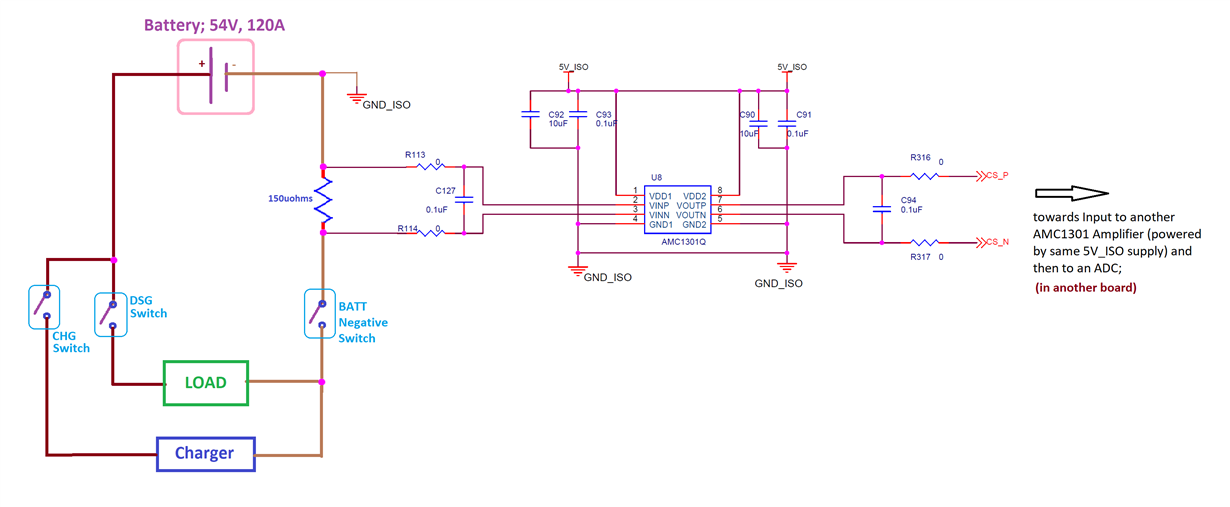Other Parts Discussed in Thread: AMC1301, AMC1302, AMC3301
Hi,
We are using a Low side current sensing with Shunt resistor and AMC1301 amplifier as shown in the below circuit;
with this implementation in actual board, it is observed that the AMC1301 used in this circuit gets heated up and internal damage occurs (like sometimes internal short between Output side pins like VDD/Vout and GND occurs);
Please help to let know if any issue in this implementation;
Note: Same Supply/GND used for both Input and Output sides; GND gets shorted to VinP;
Background: Reason for using the AMC1301 based isolation amplifier is that there are multiple same parts used for other isolated functions; hence used the same here for Diff to Diff amplifier requirement;
Thanks and Regards


